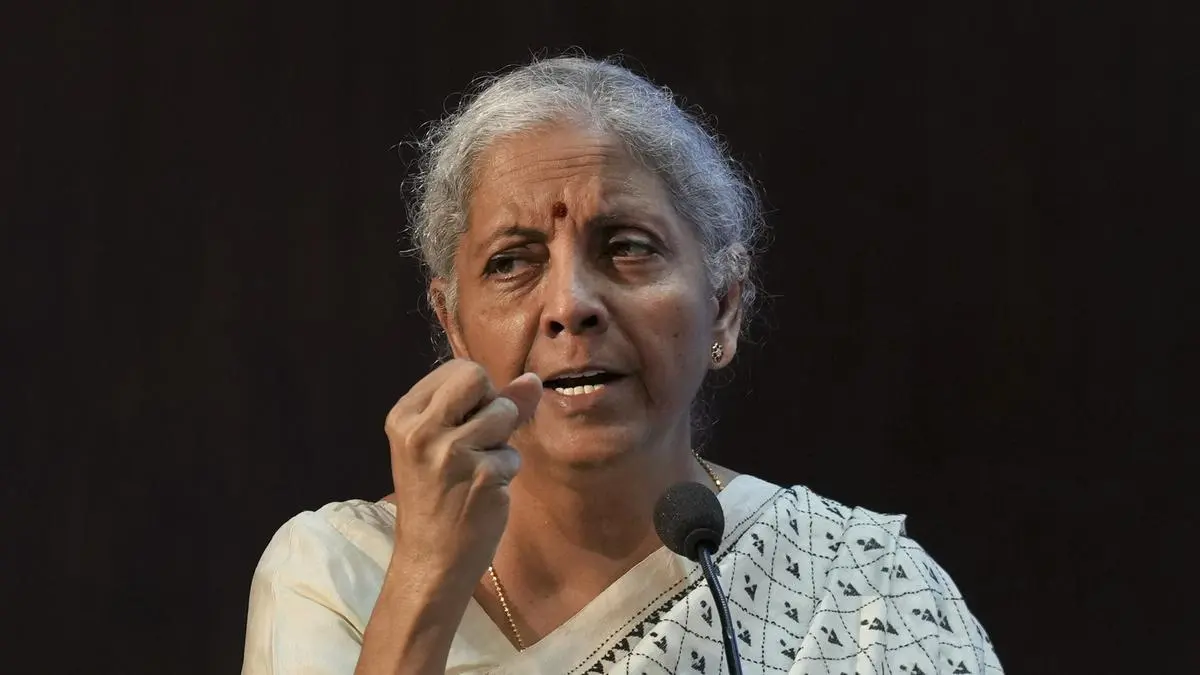By Bl Pune Bureau
Copyright thehindubusinessline

India’s economic resilience has continued, particularly in the April to June quarter this year, as well, where our GDP has grown by 7.8 per cent, said Minister of Finance Nirmala Sitharaman while speaking at the Bank of Maharashtra’s 91st Foundation Day Event in Pune. She said that the next generation GST reform has prioritised the common man, and banks have to play a significant role in building the confidence of the people, especially the youth.
“Amidst this uncertain global environment, India’s resilience stands out. Several favourable factors, such as strong macroeconomic fundamentals, a young demography and greater reliance on domestic demand, provide core strength to the Indian economy to withstand global spillovers and grow at a higher aspirational trajectory. Post-Covid, India rebounded strongly, recording an average annual growth of about 8 per cent during 2021-22 to 2024-25. It stood out as the fastest-growing major economy in the world. This economic resilience has continued, with India’s GDP growing by 7.8% in the April-June quarter,” she said.
Resilience backed by reforms, ratings upgrades
The Minister added that India’s resilience was not accidental, reflecting proactive fiscal and monetary policies, bold structural reforms, massive infrastructure creation—both physical and digital—improved governance, and enhanced competitiveness over the last decade.
“S&P upgraded India’s sovereign credit rating to ‘BBB’ (from BBB-) in August 2025 after 18 years, and Morningstar DBRS upgraded us to ‘BBB’ from BBB (low) in May 2025. Recently, the Japanese credit rating agency, Rating and Investment Information, Inc. (R&I), upgraded India’s long-term sovereign credit rating to ‘BBB+’ from ‘BBB’, the Minister said.
“With uncertainty remaining a defining feature of the global landscape, the role of banks becomes even more critical, not just as custodians of savings, but as engines of growth, providing the finance and support that businesses and entrepreneurs need to navigate volatility, seize opportunities and drive innovation”, she said.
BoM Performance
She stated that the Bank of Maharashtra’s Return on Assets (RoA) of 1.8 per cent in FY 2024-25 is significantly ahead of the average RoA of PSBs, which stood at 1.1 per cent. The bank’s Cost to Income Ratio (CIR) for FY 2024-25 stands at 38.4 per cent, which is not only the lowest among Public Sector Banks (PSBs), where the average CIR is 50.1 per cent, but also surpasses the majority of private sector banks. Additionally, a CIR below 40 per cent is globally regarded as an excellent benchmark.
“Similarly, bank’s CASA ratio of 53.3 per cent is the highest among Public Sector Banks (PSBs), where the average CASA ratio is 38.8 per cent, and it also surpasses the majority of private sector banks. Gross NPA stood at 1.74 per cent and Net NPAs stood at 0.18 per cent, at a multi year low,” she added.
Sitharaman said that Bank of Maharashtra’s Provision Coverage Ratio improved to 98.36 per cent. Total business grew by over 14 per cent on a Y-o-Y basis to ₹5.46 lakh crore, and total deposits increased by over 14 per cent on a Y-o-Y basis to over ₹3 lakh crore. RAM (Retail, Agri and MSME) Business improved to 62.10 per cent of Gross Advances. Retail advances grew by 35 per cent to ₹71,966 crore on a Y-o-Y basis. MSME advances grew by 5.65 per cent on a Y-o-Y basis.
Published on September 25, 2025



